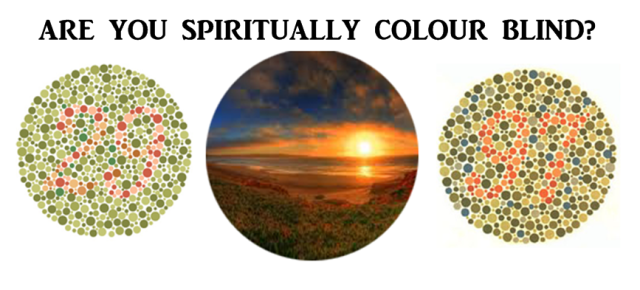It could be said that the historical Jesus, the Jew on whom the Christian myth is based, has been hopelessly obscured by the teachings of the church. We are all familiar with the typical Hollywood depiction of Jesus as a Jewish peasant permanently overdosed on diazepam. In every painful scene, dripping with faux sentiment, the obligatory dramatic over annunciation strips the character of Jesus of all nuance or subtlety of meaning.

Unfortunately, the Greek and Roman misconceptions of first century Jewish culture, which inform the Gospels, have gone unchallenged for two thousand years. The narrative and miracle stories draw a cartoon picture of Palestine. Divorced of Jewish context, they make it impossible for the reader to comprehend the significance of many parts of the story or the implication of Jesus’ words.
It is true that the novel, ‘The Last Letters of Jesus’ is a work of historical fiction and for it to work, before anything else, it had to be a thrilling read. Readers of Bernard Cornwell and the Sharpe series will recognise the style of writing. However, paradoxically it is through the medium of fiction that a more realistic picture is presented. Based firmly on modern biblical criticism and archaeology, the book sets out to allow the reader to viscerally experience the reality of first century Judea.
In defence of my position and by way of an example, the Gospels imply one Jewish country ruled by Herod Antipas who governed in tandem with the Romans. As with the Old Testament, the New Testament maintains that there is only one kind of Judaism, one that was based on the cult of animal sacrifice. Trying to understand Jesus within this paradigm is like trying to understand the Second World War set against the idea of a politically and religiously united Europe.
The Sea of Galilee and the fertile hills around the Jezreel Valley were at the heart of the Kingdom of Israel; for most of its history, the city of Shechem was its religious and political capital.
Judea in the south, on the other hand, was for most of its history a waterless and barren backwater.
After the Assyrian destruction of Israel in 722 BC, of necessity, Jewish refugees fleeing south slowly turned Jerusalem into a city.
The idea of Jerusalem being the centre of the Israeli nation is a third century Judean myth that is simply not supported by the evidence. Galilee was widely Hellenised and cosmopolitan while Judea was essentially a fundamentalist theocracy.
Since the middle of the nineteenth century, most serious biblical scholars have recognised that the ‘Sayings’ of Jesus come from a common source of Hebrew teachings. These ‘Sayings’ were used by the Synoptic evangelists to salt their miracle and narrative stories. Read chronologically, the stories directly reflect the evolution of Pauline Christology in the early church. Paradoxically the Pauline narrative stories contradict the philosophy of the ‘Sayings’ themselves.
It is extremely likely that the Nazarenes were Galilean. We know that they believed that the Judeans had forged the Torah. They opposed the Judean cult of animal sacrifice, were vegetarian and focused their practice on ritual purity and prayer. This Nazarene philosophical paradigm is alive today in Lurianic Kabbalah and is accepted as a legitimate expression of Jewish thought.
 The book, ‘The Last Letters of Jesus’, brings these separate facts and animates them into a coherent story. This approach allows the reader to explore what might have happened in reality that could have given rise to the obvious myths that surround the life and death of the historical Jesus.
The book, ‘The Last Letters of Jesus’, brings these separate facts and animates them into a coherent story. This approach allows the reader to explore what might have happened in reality that could have given rise to the obvious myths that surround the life and death of the historical Jesus.
Useful Links:
- Luke 23:7
- 1 Kings – Abijah, Hezekiah
- Professor Israel Finkelstein – The Lost Kingdom of Israel
- Dr. Steven DiMattei – El vs Yahweh – contradictions in the Bible
- Epiphanius of Salamis – Panarion
- Keith Akers – The lost religion of Jesus and Burton L Mack – The Q-Source
- Hyam Maccoby: Mythmaker: Paul and the Invention of Christianity
- Herbet Marsh: 1801 – A dissertation on the Origin and Composition of our Three First Canonical Gospels
- Bart D Ehrman: How Jesus became God



 People insist that ‘their God is better than yours’ – they are convinced that they are in the right lane because their sacred text, or more accurately, their interpretation of it, tells them so. They use this certainty of their destination as an excuse to pay absolutely no attention to how they live their lives.
People insist that ‘their God is better than yours’ – they are convinced that they are in the right lane because their sacred text, or more accurately, their interpretation of it, tells them so. They use this certainty of their destination as an excuse to pay absolutely no attention to how they live their lives.  The Judean Priestly Theocracy insisted that all national calamities were due to some ‘failing’ in the Jewish people or due to their general lack of enthusiasm for the Judean blood cult. Jerusalem was the Davidic Capital and centre of the world. To be fair, sometimes a lie is told for the best of reasons and it is possible that this lie was told to protect the people, to unite them in the face of Babylonian invasion and exile.
The Judean Priestly Theocracy insisted that all national calamities were due to some ‘failing’ in the Jewish people or due to their general lack of enthusiasm for the Judean blood cult. Jerusalem was the Davidic Capital and centre of the world. To be fair, sometimes a lie is told for the best of reasons and it is possible that this lie was told to protect the people, to unite them in the face of Babylonian invasion and exile. 









 behaviour. Contrary to the opinion of the famous French philosopher and father of modern thought, Rene Descartes, animals are not just automatic machines without souls or thought. It turns out that animals have an inbuilt morality and sense of empathy that often makes them act in a way that is directly contrary to their evolutionary advantage. Namely, when put in a cage with a button to obtain food most animals would rather starve than push the button and make a friend suffer.
behaviour. Contrary to the opinion of the famous French philosopher and father of modern thought, Rene Descartes, animals are not just automatic machines without souls or thought. It turns out that animals have an inbuilt morality and sense of empathy that often makes them act in a way that is directly contrary to their evolutionary advantage. Namely, when put in a cage with a button to obtain food most animals would rather starve than push the button and make a friend suffer.